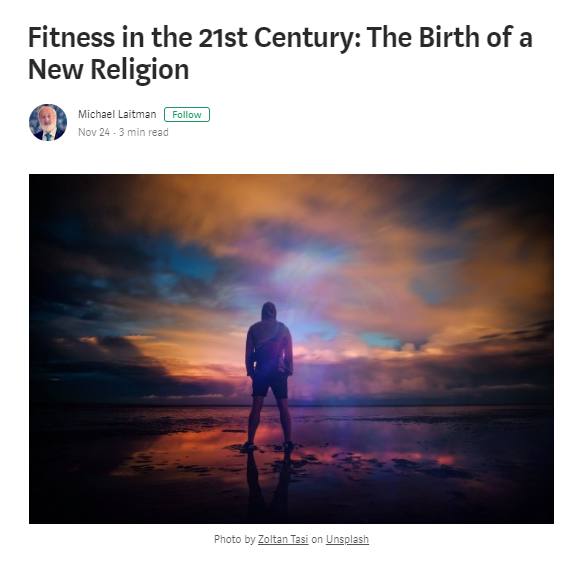
Who doesn’t want to be fit these days? Trying to stay in good shape has become a noble quest in modern life, and an expensive one. Does the effort actually yield a more fulfilling life? The end result feels more like we’ve been tilting at windmills because something is missing.
Whether your daily schedule includes preparing superfoods, working out at the gym or outdoors, taking supplements, getting state-of-the-art gadgets to measure your training performance and body levels, we invest in anything and everything necessary to be in shape and healthy at any price.
Don’t get me wrong, there is nothing bad about being fit. Regular exercise can help reduce stress and improve health. The problem arises when devotion to staying in shape becomes an obsession.
It is precisely this Western fixation on the cult of the body that feeds a $32 billion fitness industry. Instead of delivering, our preoccupation just adds pressure to our already heavyweight lives. How can we lift the weight off our shoulders and experience true satisfaction?
As far back as the 1950s, anthropologist Horace Miner wrote about a strange people called the “Nacirema” who were excessively focused on their physical appearance. Through various ceremonies and rituals, they tried to improve their condition at the ultimate expense of their peace of mind. “It is hard to understand how they have managed to exist so long under the burdens which they have imposed upon themselves,” Miner wrote in his journal.
As it turns out, the Nacirema were neither a lost tribe nor inhabitants of a far-off land. “Nacirema” is “American” spelled backwards, and Miner’s work is a critical review of the American worship of the body in current society. People are ready and willing to do anything to delay aging: undergo cosmetic treatments, consume what is marketed as optimal nutrition, follow rigorous and unconventional workout regimes, and whatever it takes to live up to 150 years if it were possible.
The characteristics of our generation have swung full-circle back to the days of Hellenistic Greek culture with its worship of the “I” and quest for perfection, personal achievement and competition. Our fitness infatuation has made us forget the essential truth of our existence: at the end of the day, the body will be buried six feet under and gradually rot. This distressing truth underscores the importance chasing an ageless and worthy goal.
We are not to be blamed for our folly because there is an instinctive desire to cultivate and preserve the body at the root of every human being. We have within us a yearning to reach eternity. We are just misguided and squander our strength on our passion for corporeal goals.
There is a way to achieve ultimate wholeness and eternity. When we aim ourselves above the limitations of our temporary lives at the soul’s development, we discover the feeling of attaining a supreme power that encompasses nature. This is the force that gives life to everything in nature, the force that allows for eternal life — the power of love and bestowal. A person imbued with this power begins to perceive a different reality, a life of balance and fulfillment.
How is it possible to live in this new reality? We enter it by focusing our “work outs” on our spiritual body, our inner self. Although we may continue our engagement in physical activities and take care of our health, our main concern becomes directed toward spiritual growth, which is achieved through human connection, i.e. by building and nurturing strong, meaningful relationships.
As we switch self-concern with concern for others, aging and the body’s expiration date are no longer the main focus of our lives. We invest in building meaningful connections instead of spending fortunes on phony fixes, we grab onto our inextinguishable soul. Then the loss of the body to death is no more painful to us than removing a shirt because we have risen above corporeal existence. By investing in our internal body, our inner temple, we will experience a life full of vitality, eternally beautiful and fit.
Featured in Medium